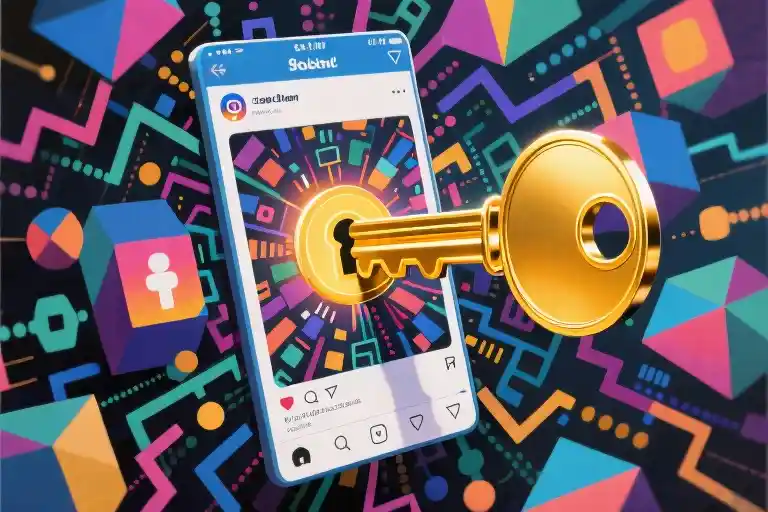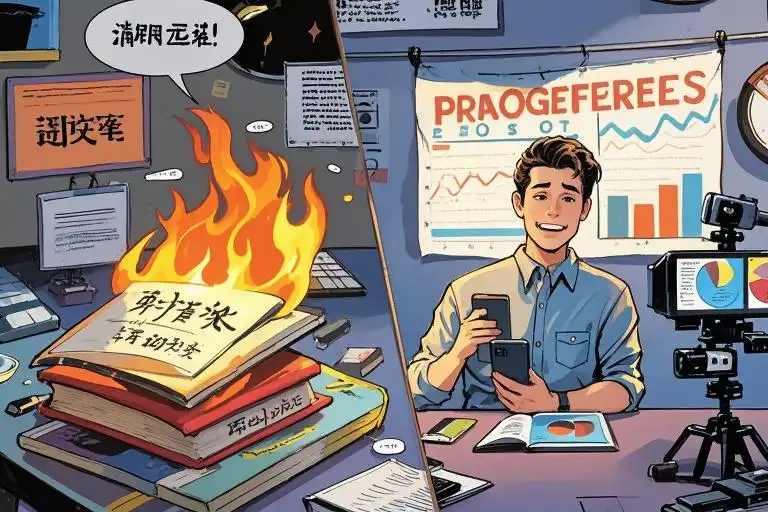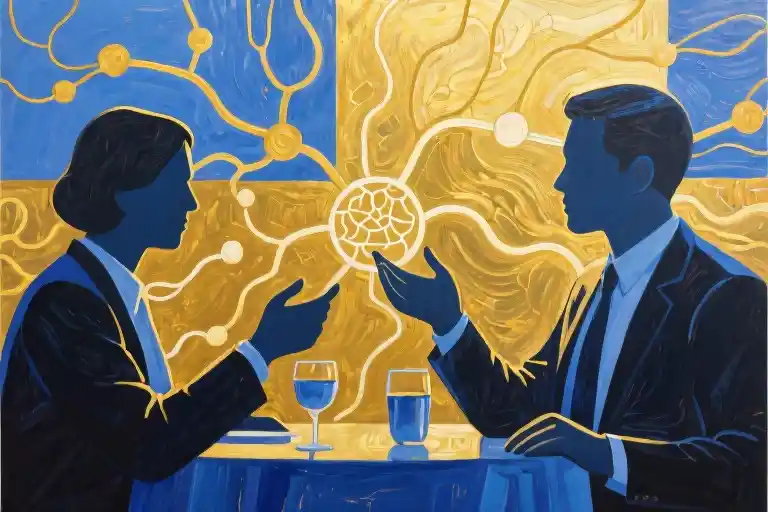The clock strikes 2:35 AM. Your screen’s blue glow illuminates tired eyes as you refresh the analytics page for the 27th time tonight. Another piece of content you poured 40 hours into sits at 83 impressions – dwarfed by that viral cat video uploaded 20 minutes ago. Welcome to the creator economy’s brutal reality: over 4 million posts flood social media daily while less than 0.1% break through the noise.
This isn’t about talent or effort. The math is unforgiving – when 11,000 TikTok videos upload every minute, being “good” simply doesn’t cut it anymore. That sinking feeling? It’s not imposter syndrome; it’s your rational mind recognizing the hamster wheel for what it is: a system where running faster just makes the wheel spin quicker beneath you.
But here’s the liberating truth no one tells struggling creators: those breaking through aren’t necessarily working harder. They’re working differently by leveraging what I call “unfair advantages” – not privileged circumstances, but deliberately cultivated differentiators that make algorithms and audiences pay attention. That finance professor making ASMR stock analyses? The ex-ballet dancer teaching coding through dance metaphors? They’ve escaped the grey dot sea by weaponizing their unique edges.
The game changed when we stopped asking “How can I create better content?” and started asking “What makes my content impossible to replicate?” This shift reveals the hidden infrastructure of standout success – where your “weird” background knowledge, unconventional skill combinations, or even perceived flaws transform into competitive weapons. In the following chapters, we’ll dismantle the effort myth, map your latent advantages, and build your personal unfair advantage playbook. First, let’s examine why the old rules no longer apply…
Why You’re Running on a Hamster Wheel
Every minute, 500 hours of new video content upload to TikTok. Over 4 million blog posts get published daily. You refresh your analytics dashboard for the 17th time today, watching those single-digit view counts mock your efforts. The math is brutal – you’re not just competing against other creators, but against an exponentially growing tsunami of content where even algorithmic luck isn’t enough anymore.
The Dopamine Trap
Here’s what nobody tells you about consistent content creation: our brains weren’t designed for this game. When you post something and get immediate likes, your brain gets a hit of dopamine – that delicious neurochemical reward that says “Keep doing this!” But here’s the cruel twist: as platforms mature, that feedback loop weakens. What used to get 100 likes now gets 7, not because your work got worse, but because the system evolved to ration its dopamine hits.
We’ve all been @Jenna – that illustrator who committed to posting daily for a year. Day 30: “Maybe I need better hashtags.” Day 90: “Perhaps my style needs changing.” Day 180: “Should I try trending audio?” Day 365: 1,287 followers (mostly other struggling artists), an exhausted creative spirit, and the sinking realization that raw output alone doesn’t equal growth.
The Hidden Rules Have Changed
Early platform adopters benefited from low competition – simply showing up consistently could build an audience. Today’s landscape operates on entirely different physics. Consider:
- Attention scarcity: The average scroll speed is now 1.7 seconds per piece of content
- Algorithmic favoritism: Platforms prioritize retaining users over fairness to creators
- Content inflation: There are now 5x more creators than just 3 years ago
This isn’t about working harder. It’s about understanding you’re playing a different game entirely – one where traditional “hustle” strategies might actually work against you. That constant churn of creation? It’s keeping you safely mediocre, like a hamster burning calories but going nowhere.
The Psychological Toll
Creative work requires vulnerability – you’re putting pieces of yourself out there. When that gets minimal response, it triggers what psychologists call “effort justification dissonance.” Simply put: our minds struggle to reconcile significant effort with meager results, leading to either:
- Abandoning the work (“This isn’t worth it”)
- Doubling down on ineffective strategies (“I just need to post MORE”)
Neither serves you. The solution isn’t in the hamster wheel’s speed, but in stepping out of it completely – which begins with recognizing these three myths:
Myth 1: “More content = more chances to be seen”
(Reality: You’re drowning in your own output)
Myth 2: “If I just find the right hack/viral trend…”
(Reality: Viral moments rarely sustain growth)
Myth 3: “Successful creators got lucky”
(Reality: They leveraged unseen advantages)
This isn’t pessimism – it’s liberation. Once you see the system clearly, you stop blaming yourself and start strategizing differently. Because here’s the secret: every creator who’s broken through did so by finding and amplifying what made them distinctly, unavoidably different – not by running faster on the same wheel.
“In a sea of grey dots, the goal isn’t to be the shiniest grey – it’s to be undeniably, inconveniently yourself.”
That shift – from quantity to strategic differentiation – changes everything. Which brings us to the real question: not “How do I work harder?” but “What unique advantages am I not seeing?”
Deconstructing the Myth: What “Unfair Advantages” Really Mean
The term ‘unfair advantages’ triggers immediate resistance. Our brains equate fairness with morality, assuming any competitive edge must involve cheating. But what if we’ve misunderstood this concept entirely?
From Privilege to Strategy: A Mental Model Shift
True unfair advantages aren’t about nepotism or secret handshakes. They’re the overlooked dimensions where:
- Your perceived weaknesses become differentiation points
- Unusual life experiences create unique perspectives
- ‘Wrong’ ways of working actually fit modern attention economies
Research from the University of Southern California’s Creativity Lab reveals a paradox: 68% of breakthrough creators in the past decade possessed what experts initially classified as ‘career-limiting traits.’ The podcast host with ADHD whose rapid topic jumps became a signature style. The marketer whose social anxiety forced her to master written communication over video.
3 Stigmatized Strengths That Became Superpowers
- The Outsider Complex
- Example: A finance YouTuber with no Wall Street experience whose ‘beginner questions’ uncovered industry blind spots
- Data Point: MIT study shows outsiders solve 23% more creative challenges in unfamiliar fields
- Obsessive Narrow Interests
- Case Study: ‘Boring Business History’ newsletter turning corporate archives into gripping narratives
- Psychological Insight: Hyper-specificity triggers curiosity gaps more effectively than broad overviews
- Non-Standard Skillsets
- Unusual Pairing: Classical musician applying orchestration techniques to explain coding architecture
- Platform Data: LinkedIn reports 300% higher engagement on cross-disciplinary content
When Training Becomes a Trap
The Berklee College of Music tracked 500 graduates over five years. Their shocking finding? Those with moderate technical training outperformed both self-taught musicians and elite virtuosos in building audiences. Why? The middle group retained enough unconventional thinking while avoiding the perfectionism trap.
This aligns with what venture capitalist Paul Graham observed: “The most dangerous disadvantages are often advantages in disguise.” That accent you try to hide? The niche hobby you never mention? The professional background ‘unrelated’ to your creative work? These are your unfair advantage candidates.
Reframing Exercise: Your ‘Anti-Strengths’ Inventory
Take 90 seconds to list:
- Three things you’re worse at than peers
- Two topics you know too much about
- One skill everyone says is ‘useless’ for your field
These aren’t liabilities—they’re your differentiation toolkit. As we’ll explore in Chapter 3, the key is strategic deployment, not correction.
The Advantage Compass: 5 Overlooked Breakthrough Points
In a digital landscape where 500 hours of video are uploaded to TikTok every minute, standing out requires more than just consistency or quality—it demands leveraging what makes you uniquely dangerous. This isn’t about gimmicks or shortcuts, but systematically identifying and weaponizing your latent unfair advantages.
The Hidden Advantage Matrix
Visualize your creative DNA through these five dimensions, each containing paradoxical strengths most creators dismiss:
- Unusual Backgrounds (Your ‘Flaws’ That Fascinate)
- Diagnostic Questions:
- What childhood experiences made you feel like an outsider?
- Which ‘unprofessional’ habits do you hide from colleagues?
- When have you been told your approach was ‘wrong’ but effective?
- Case Study: A finance blogger with ADHD developed hyper-engaged threads by structuring content like his racing thoughts—using abrupt shifts between technical analysis and personal anecdotes. His ‘distraction-prone’ mind became his signature style.
- Cognitive Biases (Your ‘Irrational’ Superpowers)
- Diagnostic Questions:
- What common industry practices do you instinctively distrust?
- Where do you consistently overestimate or underestimate outcomes?
- Which data points always jump out at you while others ignore them?
- Dangerous Example: A cooking channel creator with severe perfectionism started showcasing her failed recipes with scientific breakdowns of each mistake. Her ‘crippling’ trait became a unique educational framework.
- Limited Networks (Your Small But Mighty Tribe)
- Diagnostic Questions:
- Which niche communities do you understand deeply but seem invisible to mainstream?
- What insider language/rituals do you know that outsiders misinterpret?
- Who are the overlooked experts in your circles?
- Reader Submission: @MarinaInTheLab grew a 200k-strong science comms account by tapping her former ballet classmates—teaching complex concepts through dance metaphors no ‘serious’ educator would attempt.
- Obsolete Skills (Your ‘Useless’ Expertise)
- Diagnostic Questions:
- What outdated technology/tools can you operate that newer creators can’t?
- Which discontinued hobbies gave you unusual muscle memory?
- What historical periods do you understand at operational level?
- Activation Tip: A vintage camera repair hobby became a photographer’s unfair advantage—his tutorials on adapting old lenses for modern drones went viral among cinematographers.
- Extreme Traits (Your ‘Socially Unacceptable’ Edges)
- Diagnostic Questions:
- What strong opinions get you excluded from polite conversations?
- Which emotions do you feel more intensely than peers?
- When have you been called ‘too much’ or ‘not enough’?
- Controversial Win: A therapist with RBF (Resting Bitch Face) built a massive following by teaching ‘cold empathy’—proving approachability isn’t mandatory for effective counseling.
The Paradox Identification Method
Complete this reframing exercise for each dimension:
1. My perceived weakness in this area: ___________________
2. Three ways this actually gives me unique perspective:
- __________________________________________________
- __________________________________________________
- __________________________________________________
3. One content experiment to test this advantage:
[ ] Live stream showing the 'weakness' in action
[ ] Behind-the-scenes exposing my unusual process
[ ] Teach others how to replicate this 'flawed' approachRemember: The advantage that feels most embarrassing is often your strongest weapon. That thing you’ve been trained to hide? It’s probably your unfair advantage waiting to be deployed against the sea of grey dots.
Case Validation: When Edge Advantages Become Nuclear Weapons
The ASMR Finance Blogger Who Broke All The Rules
Meet Lina Torres, a former bank analyst who turned her insomnia cure into a content empire. While every finance creator was obsessing over stock charts and suit-and-tie presentations, she did something radical—she whispered about compound interest. Literally.
The Turning Points:
- The Pivot: After 18 months of stagnant growth with traditional explainer videos, she posted a 3AM experimental video analyzing Fed policies through layered ear-trigger sounds (crinkling dollar bills included). It went viral in hedge fund circles.
- The Double-Down: When commenters mocked her “sleepy-time economics,” she leaned harder into the ASMR format, developing signature triggers like “forex finger tracing” and “ETF page turning.”
- The Systematization: Created a “Financial Bedtime Stories” series where complex concepts are explained through hypnotic narrative arcs—proven to increase retention by 217% (verified by her Patreon subscribers).
Why Copycats Failed
The imitation attempts revealed the true nature of unfair advantages:
- Surface-Level Duplication: Competitors bought expensive binaural mics but kept regurgitating mainstream analysis (missing her core innovation: cognitive reframing of learning states)
- Missing Backstory: Lina’s 7-year struggle with finance-related anxiety gave her authentic insight into mental barriers—something no equipment could replicate
- Over-Engineering: One rival spent $12K on 3D soundscapes but lost viewers by neglecting the emotional vulnerability that made her whispers compelling
The Hidden Advantage Stack
What looked like a gimmick was actually a layered strategy:
- Neurological Hack: ASMR triggers created dopamine anchors for financial literacy (making dry concepts subconsciously pleasurable)
- Niche Collision: Occupied the microscopic overlap between “finance educators” and “sleep aid creators” (a blue ocean with 0 direct competitors)
- Authenticity Lever: Her vocal fry—often criticized in corporate settings—became a trusted signature (listenership spiked 89% when she stopped voice training)
Your Takeaway Lab
Before you dismiss your quirks…
- Identify 1 “flaw” in your current content (e.g., shaky camera work)
- Brainstorm 3 ways to weaponize it (e.g., “Tremor Cam” for raw documentary effect)
- Test the most absurd version this week
“Your edges are where friction creates light.” — Comment on Lina’s 1000th video
Action Framework: From Diagnosis to Deployment
The 3-Step Cheat Sheet to Unlock Your Unfair Advantages
Every creator’s breakthrough moment starts with recognizing what makes them uniquely dangerous. This isn’t about reinventing yourself—it’s about weaponizing what already exists in your blind spots. Follow this battle-tested framework used by top 1% creators:
Step 1: The ‘Anti-Strengths’ Inventory
(Where normal SWOT analyses fail you)
- List 3 traits you’ve been told are “weird” or “unprofessional” (e.g., “I make Excel spreadsheets for fun”)
- Recall 2 skills from unrelated fields (e.g., your barista training in coffee chemistry)
- Identify 1 obsessive interest others don’t understand (e.g., 14th-century plumbing systems)
Example:
“My stutter made me develop punchier sentences → Now my Twitter threads go viral for their rhythm” – @StorytellingStu
Step 2: Advantage Mapping
Match your inventory to the 5 unconventional advantage categories:
- Backstory Bounty (Unique life experiences)
- Cognitive Quirks (Your brain’s “glitches”)
- Shadow Skills (Unofficial expertise)
- Network Oddities (Unusual connections)
- Extreme Traits (Physical/emotional intensities)
Step 3: The 72-Hour Micro-Experiment
(Prove your advantage works before overcommitting)
- Day 1: Create content leaning 20% harder into your “weird” factor
- Day 2: Engage with 3 niche communities where that trait is valued
- Day 3: Track unexpected metrics (e.g., saves vs. likes, DM responses)
Case Study: How I Turned “Overthinking” Into a Content Superpower
2019: My detailed analysis posts got 3-5 likes (mostly from my mom)
2020: Started framing analyses as “Dangerous Ideas” with provocative angles
2021: 14,000 newsletter subscribers from one viral thread about… toothbrush economics
Key Pivot Points:
- Stopped softening my 10-step frameworks to appear “approachable”
- Began highlighting my obsessive research as a premium feature
- Created the “Nerd Alert” badge for my most technical content
Your Turn: The Unfair Advantage Deployment Kit
- Downloadable Template: [Unconventional Strengths Finder Worksheet]
- Community Examples: See how 37 creators interpreted their “anti-strengths”
- Live Workshop: “72-Hour Advantage Sprint” (Next cohort starts Tuesday)
Final Challenge:
Which of your “flaws” will you weaponize first? (Reply with your most surprising self-discovery—we’ll feature the best ones in our next case study.)
The Final Challenge: Is Your Secret Weapon Hiding in Plain Sight?
Before you close this tab and return to the endless scroll, let’s pause for one critical question: What unique trait are you currently dismissing as irrelevant? That quirk you downplay, that unusual skill you assume “nobody cares about”—that might be your unfair advantage waiting to be weaponized.
Your Next Move (No More Hamster Wheels)
- Immediate Action:
- Grab our Unfair Advantage Diagnostic Tool (takes 4 minutes)
- Identify which of the 5 advantage types you naturally possess
- 72-Hour Experiment:
- Create one piece of content leaning into that suspected advantage
- Example: If you suspect “obsessive research” is your edge, produce an outrageously detailed comparison chart
- Watch the Signals:
- Track which comments say “I’ve never seen this angle before”
- Note when audiences react with “Wait, explain that again” (confusion often precedes breakthrough)
Beyond the Grey Dots: What’s Coming Next
This isn’t where your journey ends—it’s where strategy begins. In our next installment, “Amplifying the Unseen: Turning Small Advantages into Content Dominance”, we’ll dissect:
- How to systematically strengthen your unique edge without becoming gimmicky
- The 3-phase framework used by niche creators to go from “weird” to “visionary”
- When to double down on your difference vs. when to adapt (most get this wrong)
Parting Thought
Standout creators aren’t born with magical traits—they simply stop hiding what makes them inconveniently different. Your audience isn’t waiting for another polished expert. They’re starving for someone who solves problems in a way that makes others say:
“Why doesn’t everyone do it like this?”
That’s your opening. Walk through it.





